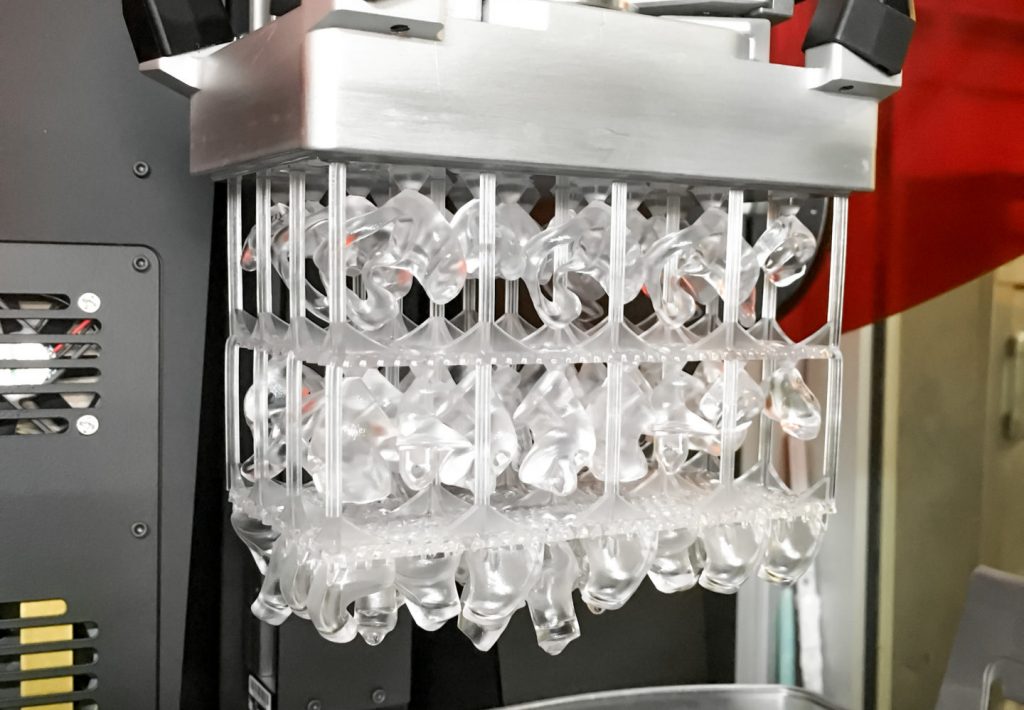One of the first breakthrough applications of 3D printing, custom-made hearing aid molds, is now showing its potential to address hearing-loss on an international scale.
Through a partnership with the Swiss World Wide Hearing volunteer organization, 3DP4ME hopes to provide 3D printed hearing-aid ear molds to disadvantaged populations in the Middle East.
3DP4ME’s combination of 3D scanning and 3D printing makes it possible to manufacture 1000s of hearing aid molds a year. To realize this goal, and establish a foundation to help more people around the globe 3DP4ME has launched a fundraiser to contribute to the $100,000 of seed funds needed to get the organization off the ground.
The money will go towards technology, equipment, and setting up the 3D printing lab for production.
3DP4ME and the need for affordable hearing aid molds
Hearing aids must have a good fit to prevent sound leakage, feedback, and discomfort to the user. Manufacturing suitable ear molds in a traditional manner usually ensures this, however, the process is slow and often expensive in developing countries.
According to the World Health Organization (WHO), less than 3% of people who need a hearing aid are thought to have one. 3DP4ME aims to address this by providing 12,000 hearing aids to some 8000 people who need hearing aids in one or both ears.
Designing the hearing aid molds
3DP4ME’s process starts with a 3D scan of the client’s ear. Previously, the organization used to use take a physical mold and then scan it, but it now uses the Aura 3D Ear Scanning System developed by Dr. Brian Fligor at Lantos Technologies.
The scanner collects over 100,000 data points, creating a 3D image of the unique geometry of the client’s ear all the way through to the eardrum. After 3D scanning the client’s ear, a digital file is produced and customized with the “Secret Ear Designer” software developed by Cyfex. This software allows greater customization, reduced costs, and increased processing speeds.
Finally, the ear molds are 3D printed on an ASIGA PRO 2 3D Printer using SLA. Compared to traditional methods, which can only produce a couple of ear molds in a day, 3D printing can make 20–35 ear molds during each print job over approximately one hour, and 1000s of ear molds per year.

Ambitions
While 3D printed ear molds for hearing aids are nothing new, 3DP4ME’s charitable model is what singles it out from the rest. Currently, 3DP4ME is an entirely voluntary organization but plans to hire a talented staff and grow to scale.
Bill Allen, who joined 3DP4ME as COO in 2017, comments:
“The best part of this has been expanding my worldview and realizing that that poverty and being able to hear are common human problems, and I hope to provide some amount of support.”
The organization also plans to introduce SLS 3D printed prostheses to its portfolio of services, a function hopefully funded in part by the $10,000. If any of readers would like the help, 3DP4ME’s fundraising page can be found here.
Let us know what you think most important 3D printing innovation has been this year. Make your nominations for the 3D Printing Industry Awards 2018 now.
For more stories on 3D printing and prostheses, subscribe to our free 3D Printing Industry newsletter, follow us on Twitter, and like us on Facebook.
A girl in Jordan provided with hearing aids from HLID. Photo via 3DP4ME.


